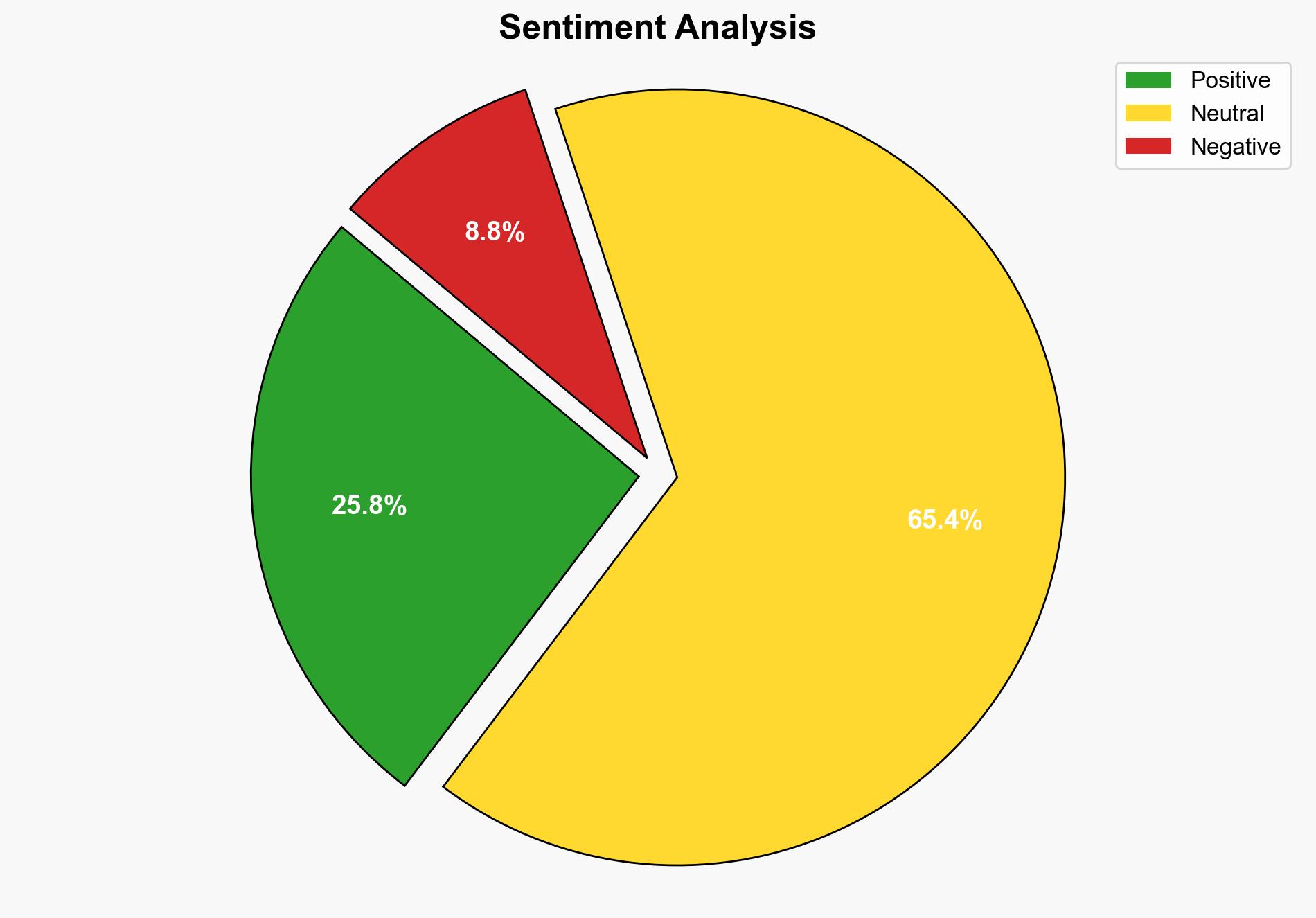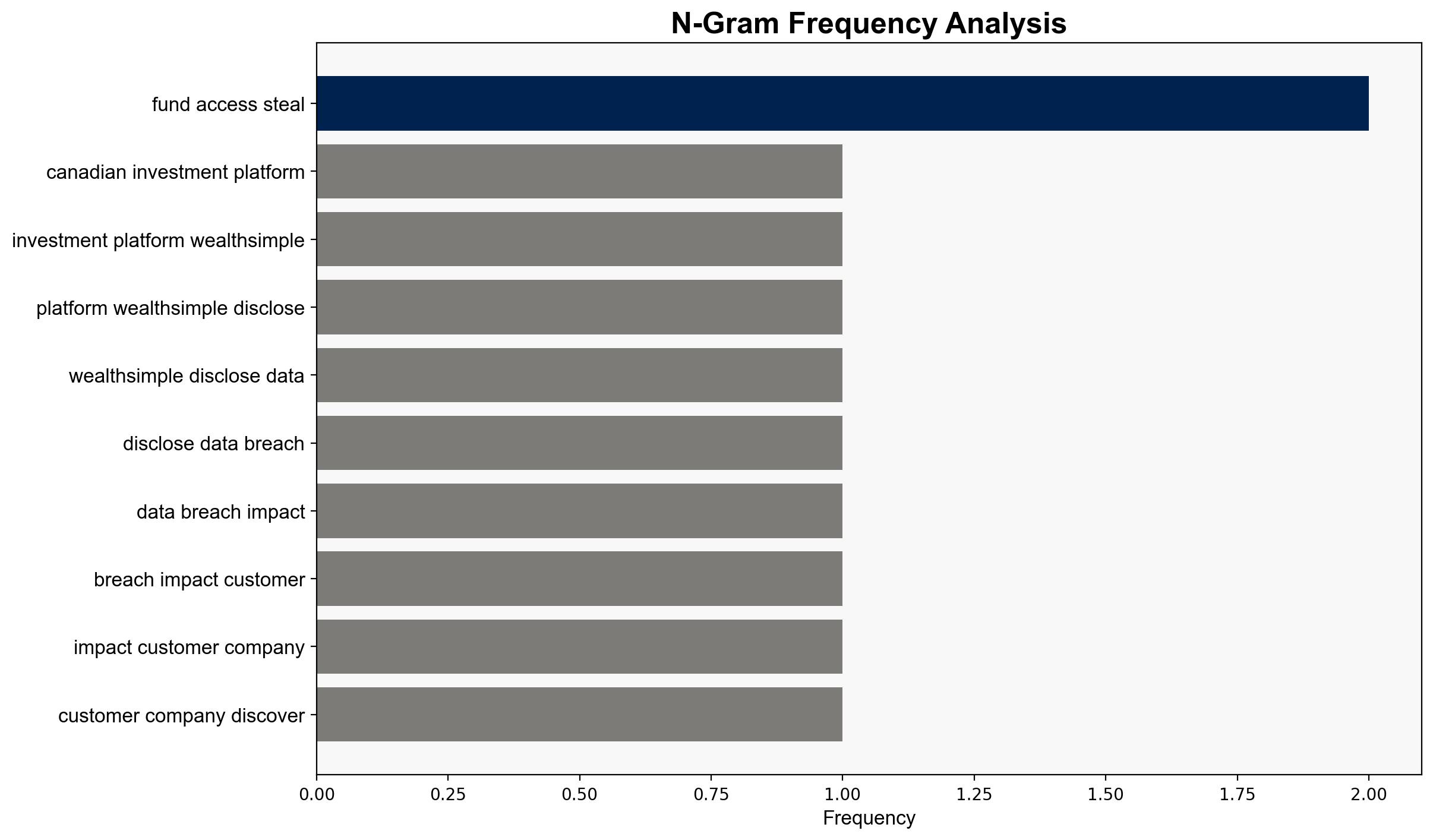Canadian investment platform Wealthsimple disclosed a data breach – Securityaffairs.com
Published on: 2025-09-08
Intelligence Report: Canadian investment platform Wealthsimple disclosed a data breach – Securityaffairs.com
1. BLUF (Bottom Line Up Front)
The most supported hypothesis is that the data breach at Wealthsimple was primarily due to a supply chain attack involving a third-party software package. This conclusion is drawn from the rapid containment and specific targeting of a software vulnerability. Confidence level: Moderate. Recommended action includes enhancing supply chain security protocols and conducting comprehensive audits of third-party software integrations.
2. Competing Hypotheses
1. **Hypothesis A**: The breach was a result of a targeted supply chain attack exploiting a vulnerability in a third-party software package used by Wealthsimple. This hypothesis is supported by the company’s disclosure of a compromised software package and the quick containment of the breach.
2. **Hypothesis B**: The breach was due to an internal security lapse or insider threat, where internal controls failed to prevent unauthorized access. This hypothesis considers the possibility of internal vulnerabilities or insufficient security protocols.
Using ACH 2.0, Hypothesis A is better supported due to the specific mention of a third-party software compromise and the rapid response indicating pre-existing external vulnerabilities rather than internal negligence.
3. Key Assumptions and Red Flags
– **Assumptions**: It is assumed that Wealthsimple’s internal security measures are robust and that the breach was solely due to external factors. There is also an assumption that the third-party software was the only point of compromise.
– **Red Flags**: The lack of detail about the third-party software and the unnamed service provider raises questions about transparency and accountability. The absence of information on whether similar vulnerabilities exist in other systems is concerning.
4. Implications and Strategic Risks
The breach highlights the vulnerability of financial platforms to supply chain attacks, which can have cascading effects on customer trust and regulatory scrutiny. Economically, the breach could lead to increased costs for security enhancements and potential loss of clientele. Geopolitically, such incidents can strain international relations if foreign entities are involved. Psychologically, customer confidence in digital financial services may be undermined.
5. Recommendations and Outlook
- Conduct a thorough audit of all third-party software and service providers to identify potential vulnerabilities.
- Enhance monitoring and incident response capabilities to detect and mitigate future breaches swiftly.
- Implement regular security training for employees to prevent insider threats.
- Scenario Projections:
- Best Case: Strengthened security measures prevent future breaches, restoring customer confidence.
- Worst Case: Additional vulnerabilities are exploited, leading to further data breaches and financial losses.
- Most Likely: Incremental improvements in security reduce risk but do not eliminate it entirely.
6. Key Individuals and Entities
– Wealthsimple (Canadian fintech firm)
– Unnamed third-party software provider
7. Thematic Tags
national security threats, cybersecurity, fintech vulnerabilities, supply chain security




